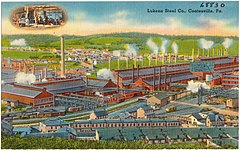- April – June
- Morgan County, WV (April 10)
- Jenkins, GA (April 13)
- Sylvester, Georgia (April 14)
- Pickens, Mississippi (May 5)
- Philadelphia (May 9)
- Charleston, SC (May 10)
- Sylvester, Georgia (May 10)
- El Dorado, Arkansas (May 21)
- Milan, Georgia (May 26)
- Putnam County, GA (May 27–28)
- New London, CT (May 30)
- Monticello, Mississippi (May 31)
- Macon, MS (June 7)
- Memphis, Tennessee (June 13)
- Bibb County, Alabama (June 18)
- Annapolis (June 27)
- Macon, Mississippi (June 27)
- New London, CT (June 29)
- July
- Bisbee, AZ (July 3)
- Dublin, Georgia riot (July 6)
- Philadelphia (July 7)
- Coatesville, PA (July 8)
- Tuscaloosa, Alabama (July 9)
- Longview, TX (July 10–12)
- Baltimore (July 11)
- Garfield Park, IN (July 14)
- Port Arthur, TX (July 15)
- Louise, Mississippi (July 15)
- Washington D.C. (July 19–24)
- New York City (July 20)
- Norfolk, VA (July 21)
- New Orleans, Louisiana (July 23)
- Darby, PA (July 23)
- Newberry, SC (July 24)
- Hobson City, Alabama (July 26)
- Chicago (July 27–August 3)
- Newberry, South Carolina (July 28)
- Bloomington, Illinois (July 31)
- Philadelphia (July 31)
- Syracuse, NY (July 31)
- August – November
- Whatley, AL (August 1)
- Lincoln, Arkansas (August 3)
- Hattiesburg, Mississippi (August 4)
- Texarkana, Texas riot of 1919 (August 6)
- New York City (August 21)
- Austin, TX (August 22)
- Laurens County, GA (August 27–29)
- Knoxville (August 30–31)
- Bogalusa, Louisiana (August 31)
- Clarksdale, Mississippi (September 10)
- Omaha (September 28–29)
- Montgomery, Alabama (September 29)
- Elaine, AR (September 30–October 1)
- Baltimore (October 1–2)
- Corbin, KY (October 31)
- Macon, Georgia (November 2)
- Ocoee, FL (November 2–3)
- Magnolia, Arkansas (November 11)
- Wilmington, DE (November 13)
- Bogalusa, LA (November 22)
|
